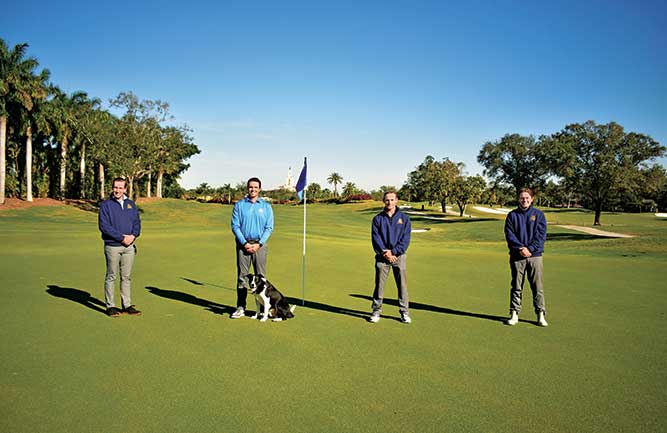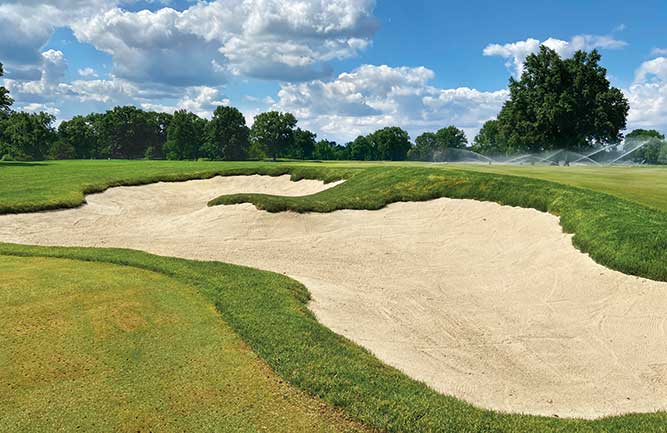Clark Talks Turf: Rolling off the greens to save on dollar spot
Jay Popko is a research associate in the turfgrass pathology lab at the University of Massachusetts, where he leads field and laboratory research on rolling, fungicide efficacy and dollar-spot resistance to fungicides. You may reach Jay at jpopko@umass.edu for more information.
Q: Describe some of the research projects you have undertaken concerning rolling creeping bentgrass fairways.
Our fairway-rolling research started with a focus on disease suppression, primarily dollar spot in our region of the country. Our initial research was to determine the frequency of rolling needed to suppress dollar spot. We have branched out to examine how spoon feeding (0.25 lbs. nitrogen/1,000 sq. ft.) with different nitrogen sources, biological control products for disease suppression, and PGRs (trinexapac-ethyl and paclobutrazol) work in conjunction with rolling to suppress dollar spot.
We found that rolling three days per week and making two passes (double roll) each day of rolling — for a total of six rolls per week — reduces dollar spot by about 50 percent compared to a non-rolled control. We mowed creeping bentgrass turf three times per week on days when the fairway was not rolled, and rolling was done from May/June through early October. We currently are conducting an experiment to determine how early in the spring to begin rolling.
Rolling fairways suppresses dollar spot and is a beneficial practice when fungicides are applied according to a dollar-spot threshold, and it increases the interval between fungicide applications. Rolling also is beneficial when superintendents follow a set-calendar fungicide spray schedule. It does this by providing dollar spot suppression under high-dollar pressure conditions at the end of a spray interval.
We have measured soil-bulk density after two seasons of rolling and found only a slight increase in soil-bulk density. We also have observed an increase in turf quality after three years of rolling.
Q: What are the mechanisms of disease control from rolling?
We do not know the control mechanism, but speculate that rolling may suppress dollar spot through some of the following:
- Stimulating the plant’s natural defense response system because of the slight stress created by rolling
- Removal of dew and reduced leaf-wetness period
- A change in the physical properties and/or microbial community of thatch
Q: What feedback have you received from golf course superintendents who roll fairways?
Most superintendents who roll fairways roll on days when they do not mow. In years of low dollar-spot pressure, they are finding they can reduce fungicide applications. Superintendents also note a better cut on the grass, and perhaps could reduce mowing frequency. In addition, golfers report improved ball roll on drives in the fairway. It would be worth considering rolling dormant warm-season grass fairways in winter to improve playability and aesthetics.
A couple of downsides superintendents report are figuring out a way to fit rolling into their normal maintenance regimes and grass clippings that clump or collect on the rollers.
Q: Is there anything you would like to add?
Rolling is not a silver bullet for dollar-spot control, but it offers another practice to help manage the disease on those courses that struggle with dollar spot. Overall, we have observed dollar-spot reductions of 25 percent to 50 percent on untreated plots. While these reductions are not acceptable as a stand-alone, they do reduce the burden fungicides carry, and can help extend or provide better control at the end of spray intervals. Lastly, we have observed improved turf quality with rolling and reduced puffiness in creeping bentgrass.










